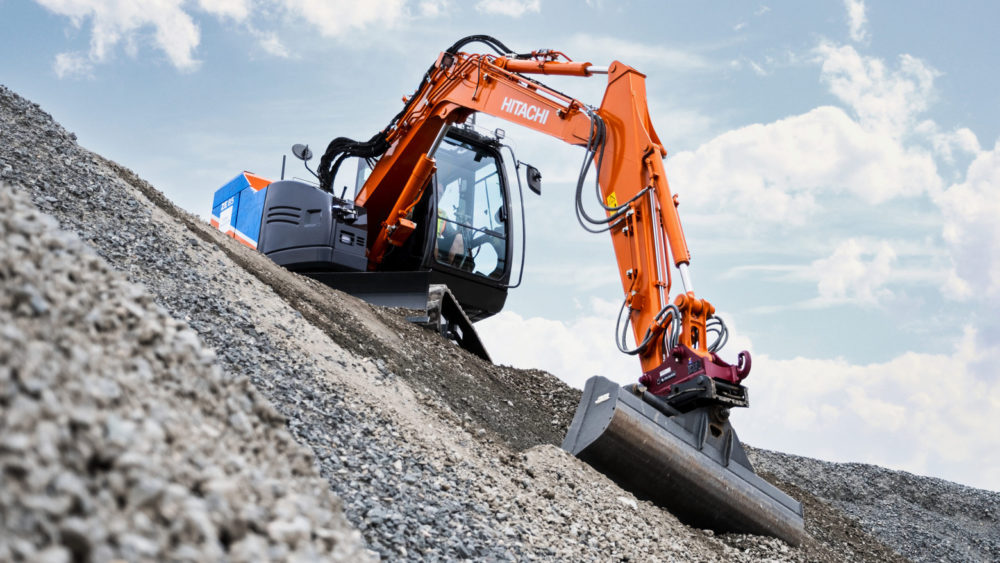![]() Added to Basket
Added to Basket
![]() Added to Basket
Added to Basket
Thursday, June 15, 2023
It should go without saying that running a safe and efficient construction site is the top priority for any business. This ranges from the clothing worn by those on-site to the operation and maintenance of the equipment.
As the producers of the widest range of hydraulic excavators in the world, reliability and safety are paramount in our delivery of equipment at Hitachi Construction Machinery


Here are five of our most important safety tips to follow when driving heavy construction equipment.
As mentioned, being aware of everything around you, including the actions of others is vital in keeping safe. Before any manoeuvre or operation of the machinery, be sure that you are aware of any potential hazards and that there is nothing or nobody behind you before moving the vehicle (even if you are moving forward). Certain blind spots in heavy construction equipment may require you to exit the machine and go to the back of the equipment to check for obstructions.
To protect yourself and your machines from potential hazards, the new Hitachi Zaxis-7 large excavators give you a superior view of your surroundings. The visibility you enjoy from the cab includes an exceptional 270-degree birds-eye view with the Aerial Angle camera system. You can choose from six image options to view the machine’s immediate environment, which enables you to control your own safety and that of those around you.
Before starting the excavator or equipment, be sure to check the display unit and controls for any error codes or potential issues.
To best avoid accidents at every juncture, it is key to be up to date with any relevant safety tips and procedures.
When entering or exiting any machinery, ensure that your feet are grounded and that you have a good grip to leverage yourself. It is important to adopt the three points of contact safety rule to limit the risk of falls or injury. When exiting, do not jump off or onto the equipment.
Most heavy construction equipment will have a lock mechanism on the door when it is fully open. Make sure to use this lock when opening the door so that it does not move in the wind and remains stable should somebody lean against it or use it as leverage into the machine.
As well as entering and exiting the equipment carefully, it is generally advised to keep extra items out of the cab to further limit the risk of accidents.
The user-friendly storage space in ZX-7 medium and large excavators keeps your workspace tidy and clutter-free.
It is essential that only the operator is in the cab and controlling the excavator/equipment. Excavators have one seat and are not intended for passengers or rides in the cab or anywhere on the machine.
Once you have entered safely and are secured in the cab, let the machine run ideally for 5-10 minutes to allow it to warm up. This is also an opportunity to conduct safety checks of your surroundings and the equipment’s controls.
At the beginning of each day, conduct an inspection of the equipment before use. If a checklist is not provided by the employer, create your own excavator safety checklist which will guarantee that no element of the inspection is forgotten.
Some examples of checks you could be making are:
If you discover any irregularities or concerns with the machine, report them to the relevant maintenance person on-site.




At the end of the day or shift, it is equally important to shut the machine down safely, including parking the equipment on a level surface, running the engine idle for a few minutes and of course, locking the cab when exiting the equipment.
One of the best ways to prioritise safety on any construction site is communicating with those around you, whether it be the ground crew, supervisors or other operators. It is most common to make use of two-way radios to ensure that everybody is aware of where they need to be and that communication remains constant. It may also be that the team on site works with spotters to communicate with each other.
When the equipment is moving or in operation, it is the operator’s responsibility to ensure the safety of others when there is earth being moved, excavated, loaded or unloaded. When operating the equipment, you must also be sat down, with the seatbelt fastened and in full control of the machine. Some other things to keep in mind:
When operating heavy construction equipment, it is your responsibility to consider the safety of yourself and those around you; being aware of your environment and acting accordingly. Following these tips will help to ensure that safety remains a priority. If you have any questions about operating and maintaining heavy construction equipment or would like to find out more about our product ranges, get in touch with our team.